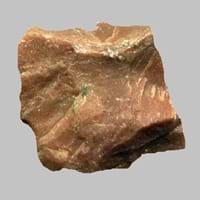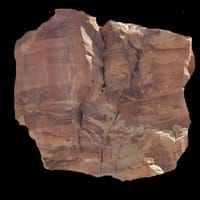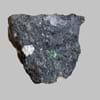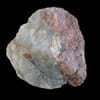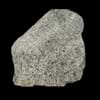Definition
Rhyolite is a fine-grained igneous rock which is rich in silica
Sandstone is defined as a rock which is composed of sand-sized grains of various minerals mostly of uniform size and often are smooth and rounded
Origin
North America
Unknown
Discoverer
Ferdinand von Richthofen
Unknown
Etymology
From German Rhyolit, from Greek rhuax lava stream + lithos stone
From its composition, sand and stone
Class
Igneous Rocks
Sedimentary Rocks
Sub-Class
Durable Rock, Hard Rock
Durable Rock, Hard Rock
Group
Volcanic
Not Applicable
Other Categories
Coarse Grained Rock, Opaque Rock
Coarse Grained Rock, Fine Grained Rock, Opaque Rock
Texture
Aphanitic, Glassy, Porphyritic
Clastic, Granular, Rough
Color
Grey, White, Light Black
Beige, Black, Brown, Colourless, Cream, Dark Brown, Green, Grey, Light Green, Light to Dark Grey, Pink, Red, White, Yellow
Durability
Durable
Durable
Scratch Resistant
Yes
Yes
Interior Uses
Decorative Aggregates, Homes, Hotels, Interior Decoration, Kitchens
Countertops, Decorative Aggregates, Interior Decoration
Exterior Uses
As Building Stone, As Facing Stone, Paving Stone, Office Buildings
As Building Stone, As Facing Stone, Office Buildings
Other Architectural Uses
Not Yet Used
Curbing
Construction Industry
Arrowheads, As Dimension Stone, Building houses or walls, Construction Aggregate, Cutting Tool, for Road Aggregate, Knives
Cement Manufacture, Construction Aggregate, for Road Aggregate, Production of Glass and Ceramics, Raw material for the manufacture of mortar
Medical Industry
Not Yet Used
Not Yet Used
Antiquity Uses
Artifacts
Artifacts, Monuments, Sculpture
Commercial Uses
Gemstone, Laboratory bench tops, Jewelry
An Oil and Gas Reservoir, In aquifers, Petroleum reservoirs, Soil Conditioner, Source of Magnesia (MgO), Tombstones, Used in aquariums
Types
Pumice Rocks, Obsidian Rocks, Perlite Rocks, Porphyritic Rocks.
Grey Sandstones, Crystallized Sandstones, Hard Sandstones , Carbonate Cemented Sandstones and Ganister
Features
Acidic in nature, Available in lots of colors
Available in Lots of Colors and Patterns, Generally rough to touch, Very fine grained rock
Archaeological Significance
Monuments
Not Yet Used
Used
Famous Monuments
Not Applicable
Abu Simbel in Egypt, Agia Sophia in Istanbul, Turkey, Angkor Wat in Cambodia, Buland Darwaza in Agra, India, Chhatrapati Shivaji Terminus in Maharashtra, India, Dom in Berlin, Great Sphinx at Giza, Egypt, Hawa Mahal in Jaipur, India, Humayun's Tomb in Delhi, India, India Gate in Delhi, India, Jama Masjid in Delhi, India, Khajuraho Temples, India, Leh Palace in Leh, India, Lotus Temple in New Delhi, India, Luxor Temple in Egypt, Machu Picchu in Peru, Neuschwanstein in Bavaria, Petra in Jordan, Qutb Minar in India, Red Fort in Delhi, India, Sanchi Stupa in India
Sculpture
Not Yet Used
Used
Famous Sculptures
Not Applicable
Ajanta Caves in Maharashtra, India, Elephanta Caves in Maharashtra, India, Mount Rushmore National Memorial in South Dakota, US
Pictographs
Not Used
Not Used
Petroglyphs
Not Used
Not Used
Figurines
Not Yet Used
Used
Formation
Rhyolite is a felsic extrusive rock and due to its high silica content, rhyolite lava is very viscous and is volcanic equivalent of granite.
Sandstone is a sedimentary rock which forms from cemented sand-sized clasts. It forms when sand layers are buried under sediments of sand.
Mineral Content
Biotite, Feldspar, Hornblade, Plagioclase, Pyroxene, Quartz
Calcite, Clay, Clay Minerals, Feldspar, Micas, Quartz
Compound Content
Ca, Fe, Potassium Oxide, Mg, Potassium, Silicon Dioxide, Sodium
Aluminium Oxide, CaO, Iron(III) Oxide, Potassium Oxide, MgO, Sodium Oxide, Silicon Dioxide
Types of Metamorphism
Burial Metamorphism, Cataclastic Metamorphism, Regional Metamorphism
Not Applicable
Types of Weathering
Biological Weathering, Chemical Weathering, Mechanical Weathering
Biological Weathering, Chemical Weathering, Mechanical Weathering
Types of Erosion
Chemical Erosion, Sea Erosion, Water Erosion, Wind Erosion
Chemical Erosion, Coastal Erosion, Glacier Erosion, Sea Erosion, Water Erosion, Wind Erosion
Grain Size
Large and Coarse Grained
Coarse or Fine
Fracture
Sub-conchoidal
Conchoidal
Porosity
Highly Porous
Highly Porous
Cleavage
Not Available
Perfect
Specific Gravity
2.65-2.67
2.2-2.8
Transparency
Opaque
Opaque
Density
2.4-2.6 g/cm3
2.2-2.8 g/cm3
Specific Heat Capacity
Not Available
Resistance
Heat Resistant, Wear Resistant
Heat Resistant, Impact Resistant, Pressure Resistant
Deposits in Eastern Continents
Asia
China, India
China, India, Kazakhstan, Mongolia, Russia, Thailand, Uzbekistan
Africa
Angola, Egypt, Madagascar, Namibia, Nigeria, South Africa
Namibia, Nigeria, South Africa
Europe
Germany, Iceland, Ireland, Italy, Spain
Austria, Denmark, Germany, Great Britain, Netherlands, Norway, Poland, Sweden, Switzerland, United Kingdom
Others
Not Yet Found
Greenland
Deposits in Western Continents
North America
Canada, USA
Canada, USA
South America
Argentina, Bolivia, Chile, Colombia, Ecuador, Peru, Venezuela
Brazil
Deposits in Oceania Continent
Australia
New Zealand, Queensland, Western Australia
New South Wales, New Zealand
Rhyolite vs Sandstone Characteristics
Though some rocks look identical, they have certain characteristics which distinguish them from others. Characteristics of rocks include texture, appearance, color, fracture, streak, hardness etc. Rhyolite vs Sandstone characteristics assist us to distinguish and recognize rocks. Also you can check about Properties of Rhyolite and Properties of Sandstone. Learn more about Rhyolite vs Sandstone in the next section. The interior uses of Rhyolite include Decorative aggregates, Homes, Hotels, Interior decoration and Kitchens whereas the interior uses of Sandstone include Countertops, Decorative aggregates and Interior decoration. Due to some exceptional properties of Rhyolite and Sandstone, they have various applications in construction industry. The uses of Rhyolite in construction industry include Arrowheads, As dimension stone, Building houses or walls, Construction aggregate, Cutting tool, For road aggregate, Knives and that of Sandstone include Cement manufacture, Construction aggregate, For road aggregate, Production of glass and ceramics, Raw material for the manufacture of mortar.
More about Rhyolite and Sandstone
Here you can know more about Rhyolite and Sandstone. The life cycle of a rock consists of formation of rock, composition of rock and transformation of rock. The composition of Rhyolite and Sandstone consists of mineral content and compound content. The mineral content of Rhyolite includes Biotite, Feldspar, Hornblade, Plagioclase, Pyroxene, Quartz and mineral content of Sandstone includes Calcite, Clay, Clay Minerals, Feldspar, Micas, Quartz. You can also check out the list of all Igneous Rocks. When we have to compare Rhyolite vs Sandstone, the texture, color and appearance plays an important role in determining the type of rock. Rhyolite is available in grey, white, light black colors whereas, Sandstone is available in beige, black, brown, colourless, cream, dark brown, green, grey, light green, light to dark grey, pink, red, white, yellow colors. Appearance of Rhyolite is Banded and that of Sandstone is Rough. Properties of rock is another aspect for Rhyolite vs Sandstone. Hardness of Rhyolite and Sandstone is 6-7. The types of Rhyolite are Pumice Rocks, Obsidian Rocks, Perlite Rocks, Porphyritic Rocks. whereas types of Sandstone are Grey Sandstones, Crystallized Sandstones, Hard Sandstones , Carbonate Cemented Sandstones and Ganister. Streak of rock is the color of powder produced when it is dragged across an unweathered surface. The streak of Rhyolite is colorless while that of Sandstone is white. The specific heat capacity of Rhyolite is Not Available and that of Sandstone is 0.92 kJ/Kg K. Depending on the properties like hardness, toughness, specific heat capacity, porosity etc., rocks are resistant to heat, wear, impact, etc.Rhyolite is heat resistant, wear resistant whereas Sandstone is heat resistant, impact resistant, pressure resistant.
